Maizengauto EV Charger Pedestal Review
The Maizengauto EV charger pedestal is a durable, weather-resistant stand designed for outdoor installations. This universal pedestal provides stable support, easy installation, and is compatible with most Level 2 chargers, making it ideal for both residential and commercial use.
The Maizengauto EV charger pedestal is a sturdy solid, weather-resistant EV charger pedestal with a clean, professional finish. Made from heavy-duty stainless steel and designed for universal EV charger compatibility, it transforms any parking space—driveways, carports, or apartment/condo lots—into a ready-to-go charging station.
EV Chargers Compatibility
The Maizengauto EV charger pedestal is engineered to fit all North American Level 2 chargers, including models from Wallbox, Autel, Lectron, Emporia, ChargePoint, Grizzl-E, and Tesla. If your charger uses a wall plate or adapter with M4 mounting threads, it’s compatible.
Even better, this dual EV charger stand supports back-to-back EV charger mounting—perfect for homes with multiple EVs. It’s a smart way to future-proof your EV charger setup and charge two vehicles from a single stand.
Need a Brand-Specific Fit?
While this stand works with nearly any Level 2 chargers, those looking for factory-matched mounts might prefer pedestals specifically designed for specific EV chargers such as Wallbox, Autel, or Tesla hardware. Check out our reviews of the best EV chargers stands by brand:
- Tesla: Top picks for Tesla charger pedestals
- Autel: Best stands for Autel chargers
- Lectron: Lectron EV charger stand reviews
- Wallbox: Wallbox EV charger pedestal options
Design & Build Quality
The Maizengauto pedestal is constructed from premium 430-grade stainless steel, offering exceptional corrosion resistance and long-lasting durability for permanent outdoor hardwired EV charger pedestal set-ups.
In contrast to competitors like the VIVO outdoor EV charging stand, which relies on a slim column with narrow cable entry and exit points prone to wiring complications, the Maizengauto pedestal features a wider, more robust vertical support column. Its spacious cable raceways are designed to accommodate larger conduits and multiple wires, making it ideal for dual EV chargers or custom installations.
The sleek, matte black electrostatic powder-coated finish not only enhances the pedestal’s modern aesthetic but also shields it from rain, UV rays, snow, and salt air making it ideal for outdoor EV charger installations. Its refined look suits residential driveways while offering the toughness required for commercial applications—unlike the BMZX Tesla charger pedestal, which we find lacking in stability and not suitable for high-traffic charging locations.
The Maizengauto EV charger pedestal features an integrated single-column design that enhances stability and simplifies installation by eliminating the need for assembly splicing. Unlike competitors like the BMZX Tesla charger pedestal, which uses two-part vertical columns, the seamless construction boosts structural integrity and reduces setup time. Clean, deep welds add to its premium, well-crafted appearance.
Standing at 59 inches (150 cm) tall, the Maizengauto pedestal exceeds the minimum height requirements set by the National Electrical Code (NEC), which mandates outdoor EV chargers to be at least 24 inches above the ground. Indoor installations must adhere to a minimum of 18 inches.
Weighing just 23 pounds, the Maizengauto pedestal is significantly lighter than the 33-pound VIVO outdoor EV charging stand. Despite its reduced weight, the Maizengauto pedestal offers superior stability, thanks to its wide design and reinforced foundation plate, which ensures better weight distribution across the vertical column and center-aligned top cover. In contrast, the VIVO stand’s top-heavy construction, with its one-sided weight distribution and self-contained baffle, compromises its stability. The Maizengauto pedestal’s lighter weight also makes it easier for one person to install.
Charging is simple and clean. The stand keeps the plug at an ergonomic height, and rolling/unrolling the cable is effortless thanks to the wide cable hook and generous pedestal height. It gives the entire setup a professional, almost commercial-level polish.
Cable Management & Protection
The Maizengauto EV charger pedestal features a stylish U-hook cable holder, offering an elegant and practical solution for organizing cables, especially those longer than 25 feet. It includes a cable management system that complies with Article 635 of the NEC, keeping cables elevated, clean, and safely stowed. This design prevents tripping hazards, reduces cable wear, and ensures proper routing and protection to minimize potential damage. The use of cable organizers, like the U-hook, further enhances the setup’s safety and compliance with EVSE cable routing codes.
However, unlike competitors such as the VIVO outdoor EV charging stand, the Maizengauto pedestal does not include a dedicated plug holder. Therefore, you’ll need to purchase a separate connector holder or use it with an EV charger with an integrated connector holder, such as the Autel, ChargePoint, or Tesla models.
The EV charger plug is a delicate component, with pins that can be easily damaged by outdoor elements, impacting charging performance, a simple solution that we found handy is to use a connector cover, which protects the plug from environmental factors and helps maintain the charger’s optimal functionality and longevity.
Installation Experience
We successfully installed the 48A Tesla Wall Connector on the Maizengauto EV charger pedestal, selecting it for its integrated cable holster—an important feature that the Maizengauto pedestal lacks.
The first critical step in any EV charger installation is assessing your home’s electrical service capacity to ensure it can support the required load for the EV charger. (Use our EV charger load calculator for guidance.) For this installation, we allocated a 60A service capacity, which is ideal for powering a 48A Tesla Wall Connector, providing the high charging current needed for the fast charging speeds that most EV owners prefer.
In compliance with the NEC’s 80% rule for continuous loads, we chose a 60A dedicated circuit breaker. The installation requires 4 AWG copper wiring, which should be routed through the 1-inch conduit. The conduit will run from the electrical panel (housing the circuit breaker) to the pedestal’s underground inlet.
The schematic below illustrates our complete setup, featuring the 48A Tesla Wall Connector hardwired to the Maizengauto EV charger pedestal. The 48A configuration is widely used for fast Level 2 charging in residential settings throughout the U.S.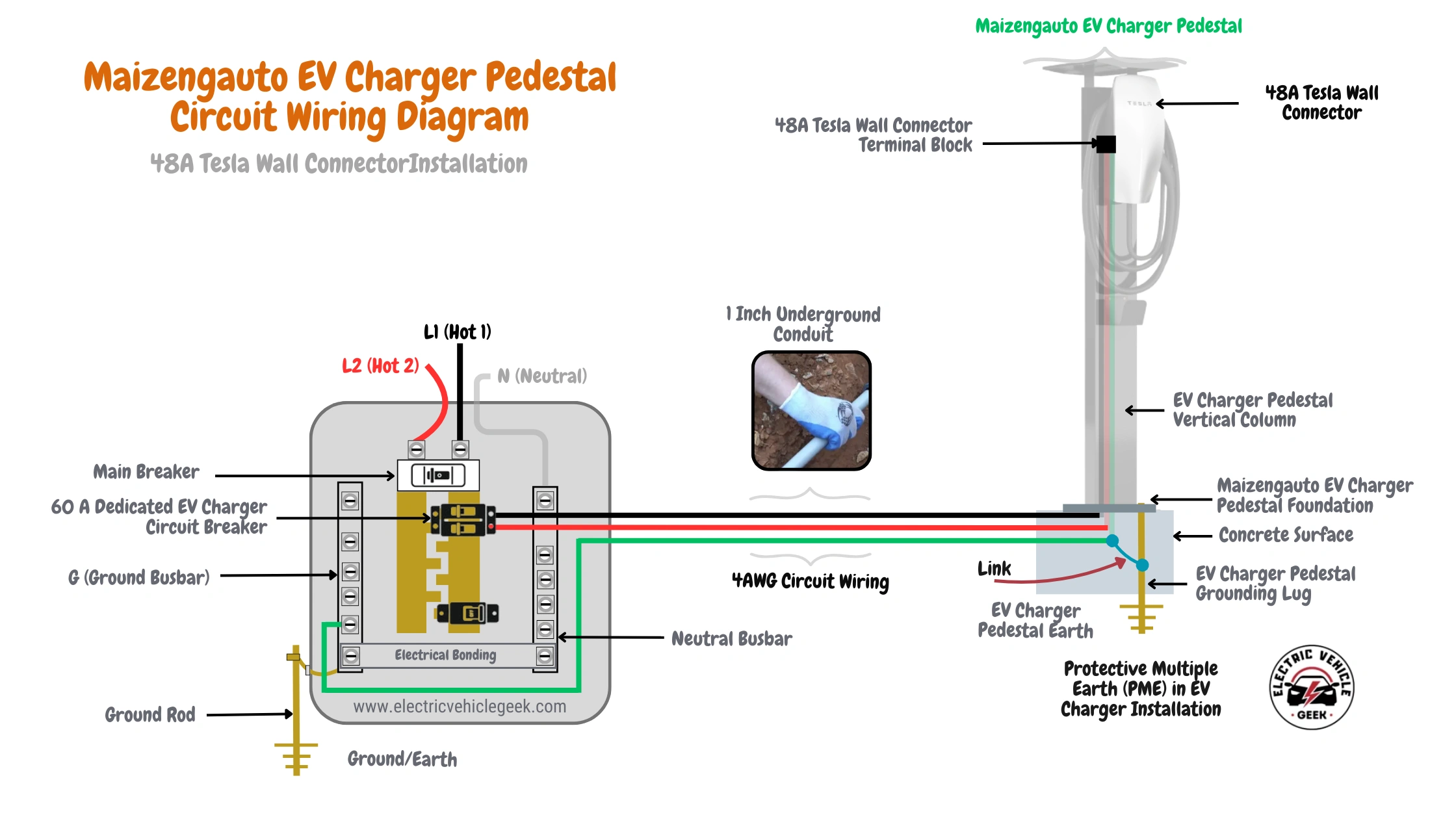
During installation, it’s vital to plan the shortest route possible between the electrical panel and the charger. Longer wire runs increase the risk of voltage drop, which can result in slower charging and safety risks.
Minimizing wire length reduces electrical resistance, ensuring the system operates at peak efficiency and performance. A shorter circuit path to the Maizengauto EV charger pedestal also prevents EV charging voltage drops, and overheating under high-amperage continuous loads, reduces strain on the circuit, and enhances the longevity of the entire EV charger installation. Always keep the conduit route clear and unobstructed for the safest, most efficient installation.
Pedestal Assembly and Installation
The pedestal arrives nearly fully assembled. You only need to attach the backing plate and roof cap, which takes less than 10 minutes with basic tools. The base comes pre-drilled with four mounting holes, and compatible standard concrete anchor bolts. With the right tools, installation is straightforward—even for a DIYer.
Installation Tips:
- Use concrete wedge anchors for a secure, long-lasting base.
- Ensure the surface is level before final tightening.
- Consider using stainless bolts to match the pedestal’s corrosion resistance.
Once bolted down, the pedestal is rock-solid with zero wobble.
Wiring the Maizengauto EV Charger Pedestal
Begin by installing conduit from the main electrical panel to the pedestal’s underground inlet, ensuring a continuous, protected path for the wiring.
For the circuit wiring, use THWN or THWN-2 conductors rated for 90°C, suitable for both wet and dry locations. According to the National Electrical Code (NEC), outdoor and underground conduit runs are classified as wet locations, making THWN-2 the preferred choice for enhanced durability and compliance. For direct burial, Type USE (Underground Service Entrance) or URD (Underground Residential Distribution) cables are permitted and can be installed either without conduit or within conduit underground, providing flexible and code-compliant options.
Next, carefully pull the wiring up through the pedestal’s vertical column, routing it out through the cable outlet at the top.
Securely terminate each conductor at the EV charger terminals, ensuring all connections are tight and properly fastened to prevent any electrical faults.
Align the EV charger with the pedestal’s pre-drilled mounting holes and fasten it using the supplied mounting plate and hardware.
For outdoor installations, apply a weatherproof caulk around the pedestal base to seal any gaps. Additionally, install a weather-rated outlet cover to protect against moisture, dust, and other environmental factors, ensuring reliable operation and longevity of the charging system.
Potential Alternatives
Final Verdict
The Maizengauto EV Charger Pedestal is one of the best-value universal EV charging stands on the market today. With its premium materials, smart design, and robust build, it’s an ideal choice for homeowners, fleet managers, or anyone looking to install a freestanding EV charger.
Whether you’re upgrading an off-wall parking area or installing an outdoor EVSE in a public lot, this pedestal gives your charger a solid, weatherproof foundation that looks sharp and performs reliably. For under $200, it’s a worthy investment—and one that could outlast your current EV charger.
EV Charger Pedestal Related Guides
EV Charger Pedestals 101
A beginner-to-pro overview of EV charger pedestals—covering materials, height standards, and compatibility with charger types.
Plug-In EV Charger Pedestal Installation Guide
Detailed guidance on mounting a plug-in EV charger pedestal, with illustrations for NEMA receptacle installation and cable protection.
Hardwired EV Charger Pedestal Installation Guide
Best practices for setting up a permanent hardwired EV charger system on a pedestal, with grounding, wiring, and inspection tips.
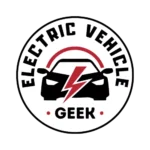
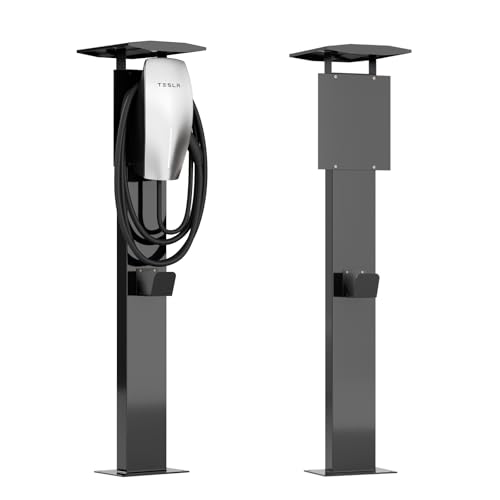

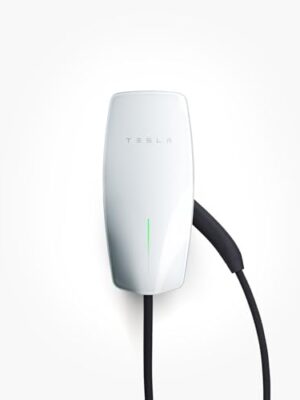
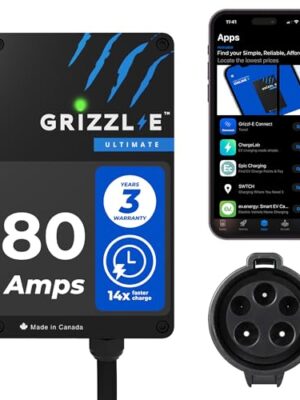
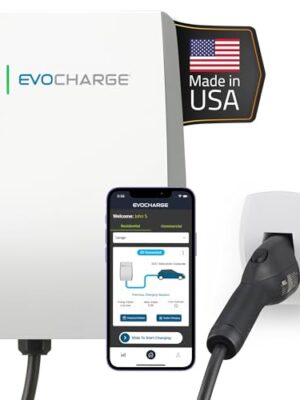

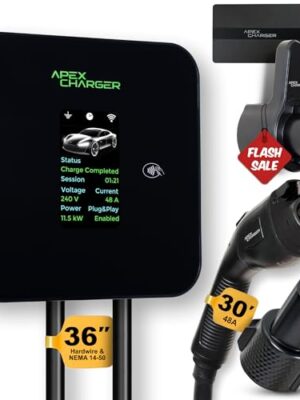
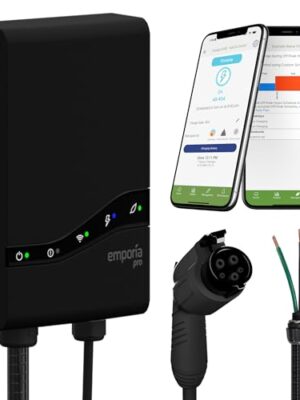
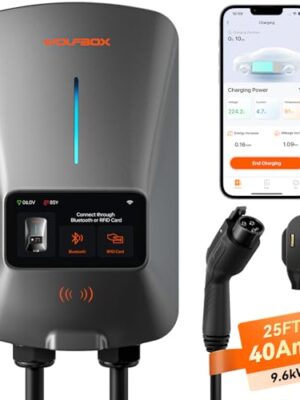
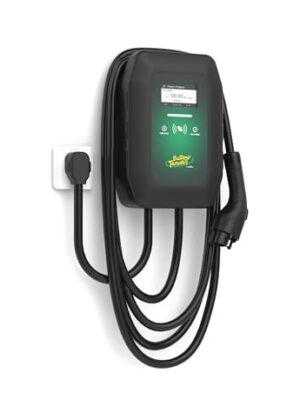
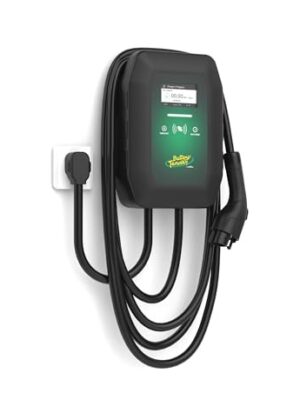
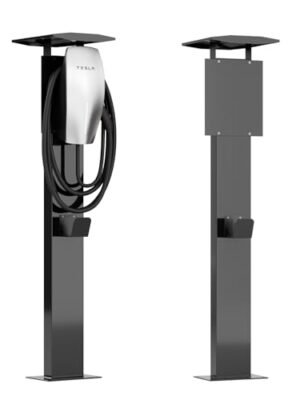
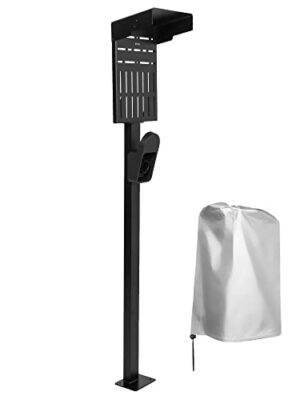

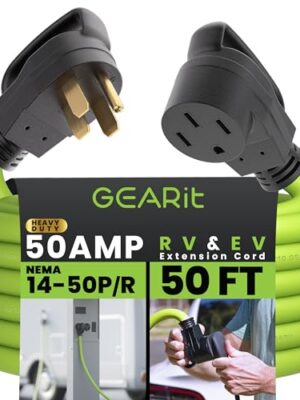
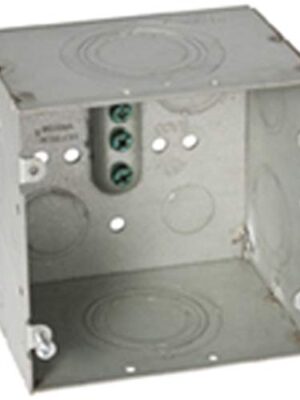
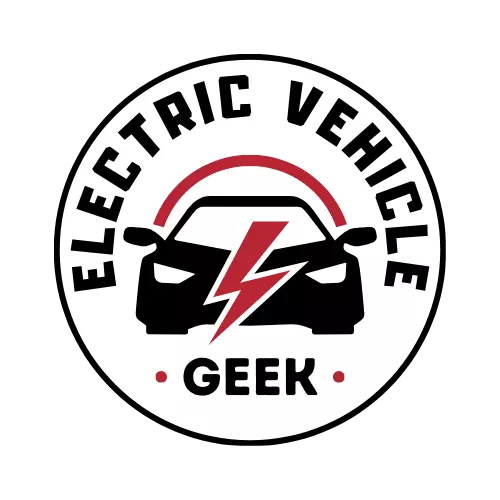
There are no reviews yet.